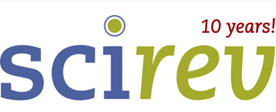Exploring relationship of animacy and syntactic cues in processing strategies of second language learners
Keywords:
Animacy, Syntactic Cues, Processing Strategies, Second Language Acquisition, RussianAbstract
This study examines the relationship of animacy and syntactic cues within language processing strategies of second language learners. Animacy is deeply rooted in the cognitive machinery of language and the syntactic organization is sensitive to the animacy of the entities involved. Thus, the aims of the study are to explore how second language learners weight and integrate the syntactic information during a task where they are processing language, and to investigate the interaction between animacy and syntactic cues during their syntactic processing. This study has a descriptive and exploratory nature. It is a competition model, Macwhinney, that is used for the theoretical support, that is a cognitive model, and explains how 2 language learners move through their linguistic possibilities in real-time language processing. A total of fifty childrem (25, Girls and 25 boys) had been selected for this study and it was found that convenient random sampling techniques was used to collect the data and data was analyzed with the help of SPSS IBM version 22. The dominant behavior of using animacy for processing in the study also highlights the enduring and somewhat invariant tendencies of participants to incorporate animacy information into their cognitive processing of language.
Downloads
References
Barcelos, A. M. F. (2003). Researching beliefs about Sla: A critical review. Beliefs about SLA: New research approaches, 7-33.
Oxford, R. (1990). Language learning strategies: What every teacher should know. Heinle & Heinle Publishers.
Chamot, A. U., & O'Malley, J. M. (1994). The Calla handbook: Implementing the Cognitive Academic.
Long, M. H. (1980). Input, interaction, and second-language acquisition. In H. Winitz (Ed.), Native language and foreign language acquisition (pp. 259–278). New York: New York Academy of Sciences.
Carminati, M. N., et al. (2008). "Syntactic priming in comprehension: the role of argument order and animacy." Journal of Experimental Psychology: Learning, Memory, and Cognition 34(5): 1098.
Li, P. and B. MacWhinney (2013). "Competition model." The encyclopedia of applied linguistics: 1-5.
Macdonald, R., et al. (2020). "The role of animacy in children's interpretation of relative clauses in English: Evidence from sentence–picture matching and eye movements." Cognitive science, 44(8): e12874.
Downloads
Published
Data Availability Statement
The data that support the findings of this study are available from the corresponding author upon reasonable request.
License
Copyright (c) 2025 Muhammad Farman, Shumaila shoukat, Rabia Mamoon (Author)

This work is licensed under a Creative Commons Attribution-NonCommercial-ShareAlike 4.0 International License.


































